
- Homepage
- Material
- 100% Cotton (77)
- 100% Cotton Sateen (166)
- Canvas (16)
- Ceramic (78)
- Cotton Canvas (16)
- Crystal (37)
- Glass (53)
- Iron (63)
- Leather (24)
- Linen-cotton Canvas (20)
- Metal (76)
- Metal, Stone (14)
- Minky (82)
- Paper (15)
- Polyester (22)
- Porcelain (59)
- Pottery (14)
- Resin (24)
- Unknown (23)
- Yellow Gold (25)
- ... (1525)
- Pattern
- Abstract (3)
- Animal Print (22)
- Animal Theme (41)
- Animals (158)
- Bird (13)
- Birds (52)
- Diamond (19)
- Flamingo (77)
- Flamingo Bird Print (3)
- Floral (28)
- Geometric (14)
- Love Birds (2)
- No Pattern (3)
- Not Specified (502)
- Novelty (5)
- Pink Flamingo (7)
- Polka Dot (16)
- Solid (26)
- Tropical (4)
- Tropical Theme (6)
- ... (1428)
- Size
- 24x30 (17)
- 30x40 (7)
- 48 X 70 (8)
- 48\ (78)
- 50\ (32)
- Full / Queen (23)
- King (46)
- Large (75)
- Large (up To 60in.) (9)
- Large - 90” Round (15)
- Medium (54)
- Medium (up To 36in.) (63)
- Queen (20)
- Roll 24\ (171)
- Roll 24in X 27ft (195)
- Small (86)
- Small (up To 12in.) (18)
- Small - 70” Round (9)
- Standard (19)
- Twin (77)
- ... (1407)
- Subject
- Theme
- American (17)
- Animal (7)
- Animal & Insect (10)
- Animals (76)
- Animals & Dinosaurs (7)
- Animals & Insects (9)
- Art (18)
- Beach (15)
- Beauty (14)
- Beauty, Art, Love (50)
- Bird (41)
- Birds (350)
- Birds & Birdhouses (17)
- Botanical (7)
- Flamingo (85)
- Flamingos (7)
- Ocean (22)
- Party (31)
- Rose (10)
- Tropical Birds (15)
- ... (1621)
- Type
Vintage MCM Brad Keeler Flamingo Pond Lot California Pottery Art Deco Ceramic
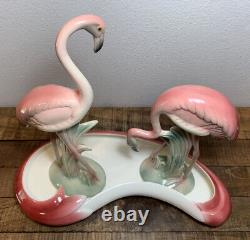

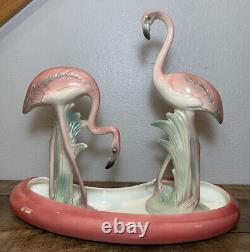

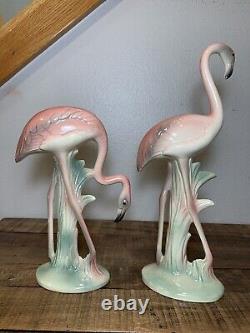







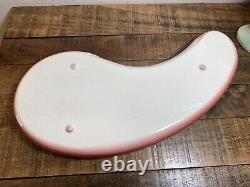

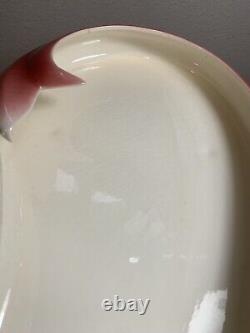








Vintage Brad Keeler Flamingos Pond California Pottery MCM Art Deco 3pc Set Lot. This is for a 3-piece set that includes. Condition: Both flamingos have Brad Keeler impressed on the bottom and have his signature crazing. One flamingo appears to have been cracked/broken at the neck at one point and then repaired, see last couple photos. As these were handmade/hand painted, they do have some natural imperfections from/during manufacturing process. The pond has no markings and the pink color is slightly darker than the flamingos. Pond has crazing, no chips. Items will be individually bubble wrapped and double boxed for added protection. About Brad Keeler (from bradkeelerartwares). Brad was a self-starter and soon he built a studio at his home in Glendale, CA on Delay Drive and began making "Bradster" pottery, in partnership with a friend named Webster.
Webster was the primary modeler in the beginning, and Brad did the mold work. When it came time to expand, Brad rented space from American Pottery in East Los Angeles.
After the war, with business still booming, he decided to expand again. In early 1952 he suffered a heart attack at the age of 39. Unfortunately, after his death, my grandmother's (Brad's wife) efforts to maintain the company were not successful, the business foundered, and it was forced to close its doors. When seeking out his work, you can tell it's a Brad Keeler piece in several ways. It will likely have a sticker somewhere on it, black & gold & oval shaped, that says "Brad Keeler Artware", OR it will have either "BBK" or "Brad Keeler" inked or impressed into underside of the base of the piece, OR it will say "Bradster", which is the earliest incarnation of his work when he teamed up with a friend named Webster (thus the name), OR it will say "Catherine Keeler", which is the last incarnation of his work, most likely produced shortly after his death during the period in which my grandmother, his wife, Catherine Keeler, attempted to keep the factory running.
In most cases there is also a number inked or impressed into the underside of the base denoting the particular model. Sometimes, that is the only marking on the piece. There are physical aspects to look for: There is always crazing i. A pattern of cracking within the glaze, and with the eyes, there is (to the best of my knowledge) always a skinny white triangular shape, sort of like a very very thin wedge of pie, representing a reflection in the eye. All of the pieces that I own are like this, and according to my mom, they all are.

